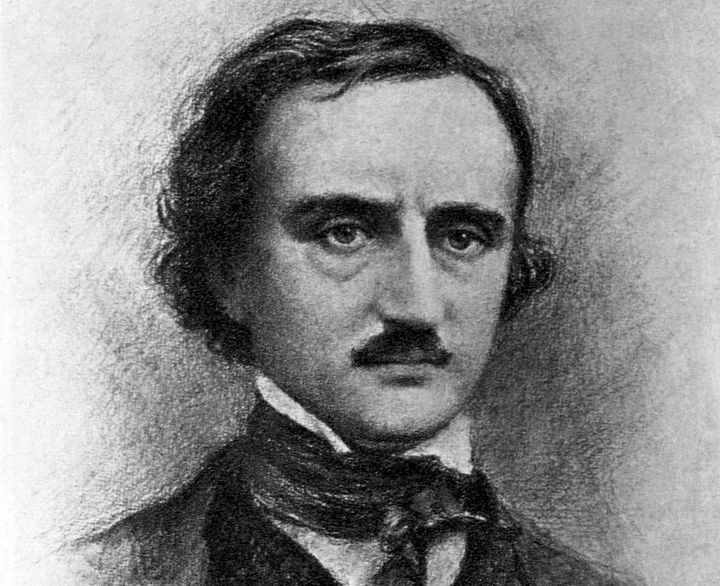Copyright 2019 by Gary L. Pullman
Laurie
Strode, of the Halloween
franchise, survived several times against her supernatural adversary
Michael Myers (aka “The Shape”). As a final girl, she represents
a character who possesses the fitness to adapt to her environment
and, therefore, survive to pass her genes to her offspring (unlike
those of her peers whose genetic inheritance wasn't sufficient to
ensure their own survival). The question arises, What traits helped
Laurie to survive against Myers? What was, in the Darwinian sense,
special about her?
Her
older sister Judith, the first of Myers's victims, was stabbed to
death when Laurie was but a young girl. (At the time, Judith was in
her teens, and Myers, her older brother, was six years old.) In
January 1965, her parents were killed in a car accident, and
four-year-old Laurie was adopted by Morgan and Pamela Strode, who
changed her last name to theirs. The governor of Illinois ordered
that the adoption records be sealed so that Myers would not be able
to connect Laurie Strode to his surviving sister. Eventually, Laurie
no longer recalled her original family.
By
1978, Laurie had developed into a shy, introverted, 17-year-old girl
who preferred books to boys. The Strodes owned the Myers house, in
which Laurie grew up, and Morgan asked her to return the keys to the
house. On her way to do so, she spotted a male stranger who seemed to
be shadowing her. She learned that one of her friends, Lynda, has
also been followed by a mysterious man.
While
babysitting Tommy Doyle, the son of neighbors, Laurie was visited by
her fellow babysitter, Annie Brackett, who asked Laurie to babysit
her charge, Linsdey Wallace, so Annie could be with her boyfriend,
Paul Freedman. Reluctantly, Laurie agreed, after Annie promised to
break the date she'd arranged, without Laurie's knowledge or consent,
between Laurie and Bennett Tramer, a boy in whom Laurie was
interested.
When
Laurie visited the Wallaces' house to check on Annie, Laurie
discovered the bodies of Annie, Lynda Van Der Klok, and Lynda's
boyfriend, Bob Simms, positioned throughout the house. Myers, who'd
returned to Laurie's (and his own) hometown, Haddonfield,
Illinois—he'd been the mysterious figure Laurie had spied following
her—attacked Laurie, slicing her arm with his knife. Laurie fell
off the second-story landing and down the stairs, fracturing her
ankle. She managed to limp to the Doyles' house, calling for the
children to admit her. When Tommy did so, she entered the house and
locked the door. Myers slipped through a window, attacking Laurie
again.
She
fended him off, stabbing him in the neck with a knitting needle,
before running upstairs. Myers pursued her, cornering her in a
bedroom closet. Although he attempted to stab her with his knife,
Laurie straightened a clothes hanger, using it to jab Myers in the
eye, and he dropped his knife. Laurie picked up the weapon, stabbing
Myers in the stomach. He fell to the floor, and Laurie assumed she'd
killed him. Leaving the closet, she ordered the children to flee the
house. Soon thereafter, Myers began to strangle her, but Laurie
pulled his mask away, exposing his face. Myers's former psychiatrist,
Doctor Samuel Loomis, arrived and shot Myers six times, each bullet
driving him backward, through the bedroom window, and he fell from
the balcony. Loomis looked, but Myers was nowhere in sight.
Biographies
of the victims in the original Halloween
movie (Annie
Brackett, Lynda
Van Der Klok, and Lynda's boyfriend, Bob Simms) suggest that they
have mostly negative traits which advance their needs and desires at
the expense of the welfare of others, while the survivor, Laurie
Strode's personality traits, which are mostly positive, tend to
favor both her own welfare and that of others. As such, Laurie's
characteristics allow her to unite with others against a common enemy
(as she does in later films of the franchise or to act in support of
both her own welfare and that of others, as she does throughout the
franchise).
|
Laurie Strode (Final Girl)
|
Traits
(Green
+ socially sanctioned; red =
socially condemned; uncolored = socially neutral)
|
|
|
Kindness
Shyness
Introversion
Studiousness
Defiance
Responsibility
Persistence
Courage
Inventiveness
|
|
Annie Brackett (Victim)
|
Deceptive Sarcastic Hasty Exhibitionistic Impertinent Aggressive Presumptuous
Defiant
ManipulativeIrresponsible Promiscuous |
|
Lynda Van
Der Klok (Victim)
|
Disorganized and
unfocused Gregarious Extroverted Social Unscholarly Loud Annoying Promiscuous Brash
Defiant
TeasingTitillating |
|
Bob Simms (Victim)
|
Athletic Intelligent Deceptive Irresponsible Defiant Rash |
Laurie's
positive values are those endorsed by her society and culture, the
values of secular humanism, or what the philosopher Friedrich
Nietsche calls (and condemns as) “herd
morality.” According to Nietsche,
Herd
morality is a development of the original slave morality which
inherits most of its content, including a reinterpretation of various
traits: impotence becomes goodness of heart, craven fear becomes
humility, submission becomes ‘obedience’, [sic] cowardice
and being forced to wait become patience, the inability to take
revenge becomes forgiveness, the desire for revenge becomes a desire
for justice, a hatred of one’s enemy becomes a hatred of injustice
(Genealogy of Morals).
He
condemns herd morality, because, he says,
‘Well-being’
in herd morality limits human beings, promoting people who are
modest, submissive and conforming . And so it opposes the development
of higher people, it slanders their will to power and labels them
evil. Belief in its values limits people who could become higher
people, leading them to self-doubt and self-loathing ( Genealogy
of Morals).
If
Laurie, the final girl, the survivor not only of the original
Halloween movie, but
also of the entire franchise to date, adheres to herd morality, the
victims, those who fail to survive, must represent the opposing
morality that Nietsche characterizes as a position “beyond good and
evil,” the amoral stance of the superman, which reverses the tenets
of the herd morality and could, thus be characterized as its
opposite, an
amoral position opposed to herd morality and to the original slave
morality from which herd morality developed, based on the ideas that—
|
Heroic Amorality
|
Herd Morality
|
|
Goodness of heart
|
Impotence
|
|
Craven fear
|
Humility
|
|
Submission
|
Obedience
|
|
Cowardice and being forced to wait
|
Patience
|
|
The inability to take revenge
|
Forgiveness
|
|
The desire for revenge
|
Justice
|
|
Hatred of one's enemy
|
Hatred of injustice
|
If
we list Myers's personality traits, as they are presented or
suggested by his behavior, we see a predator motivated by impulses
that are considered, as Dr. Loomis later describes them, “pure
evil.” In other words, Myers
is everything civilized society condemns:
|
Michael Myers (Predator)
|
Traits
(Green
+ socially sanctioned; red =
socially condemned; uncolored = socially neutral)
|
|
|
Irrational Sociopathic Amoral Emotionless Evil Murderous Schizophrenic Vengeful Predatory Voyeuristic Violent Persistent Thieving Duplicitous Superhuman stealth, strength, endurance, durability, survivability |
For
Nietzsche, the opposite of the herd is the “Superman,”
a “superior man [who] would not be a product of long evolution;
rather, he would emerge when any man with superior potential
completely masters himself and strikes off conventional Christian
'herd morality' to create his own values, which are completely rooted
in life on this earth. Nietzsche was not forecasting the brutal
superman of the German Nazis, for his goal was a “Caesar with
Christ’s soul.”
Thus,
we see that, although Myers may have some of the traits of the
Nietzschean superman, Myers, lacking “Christ's soul,” is not such
a figure, nor is he a type of Caesar, for Caesar conquered nations;
he did not waste his life murdering individuals for no apparent
motive, nor were his foes, for the most part, teenagers, women,
children, and helpless men, as were Myers's victims.
If
anything, he is a rogue figure, without any redeeming qualities,
something neither human nor superhuman, but subhuman. Unless one is a
Caesar, the herd is needed to resist such a creature, a herd
energized by the traits that make up the final girl, Laurie Strode's
character, although she might be better off with the defiance
exhibited in her smoking marijuana, a substance which, at the time
she used it, was illegal, set apart by society as forbidden and
dangerous. (It does no good to argue that, today, the recreational
use of marijuana is tolerated, if not accepted, by most of the
population, as, ordinarily, a character must be judged by the moral
standards—and, indeed, by the laws—of the society of the time;
although an act or an institution—whether the smoking of marijuana
or slavery—may be reckoned as having been right or wrong by later
generations, it is a rare person who transcends a contemporary
understanding of right and wrong during his or her own lifetime.)














